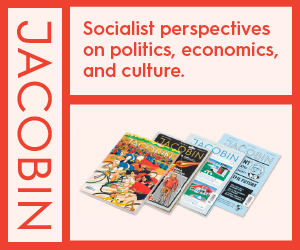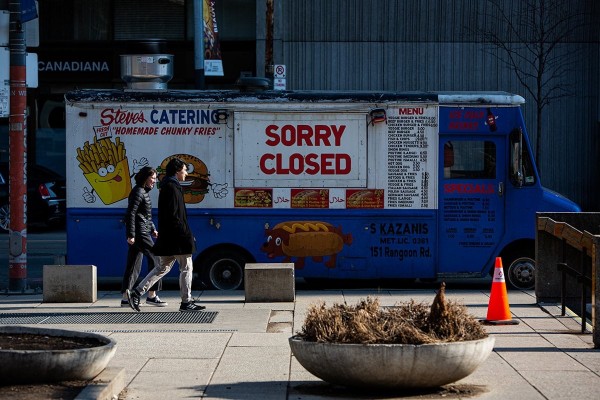Organizing the unemployed in Alberta: Lessons from past depressions
We need to take up the challenge posed by our radical Prairie forebears

William Dudley “Big Bill” Haywood during the Lawrence textile strike on the Lawrence Common, Massachussetts, March 14, 1912. Photo from Wikimedia Commons.
Periods of mass unemployment, like the daily-worsening crisis triggered by COVID-19, overwhelm government relief systems, and they critically stress the ideological justifications for the normally austere distribution of social support.
Unprecedented layoffs and job losses have made millions of Canadians uneasily aware of how close they were to being broke, and a flood of applicants to the ad hoc emergency support systems have been crashing relief websites. While Canadians are quarantined and waiting on cheques from EI or the Canada Emergency Response Benefit (CERB), the conjoined rhetoric of the free market’s ability to provide, and the individual’s responsibility for their own unemployment and poverty—from lack of ambition, laziness, financial mismanagement, addiction, or some other character flaw—has been temporarily deferred.
In its place is the disaster discourse; an unforeseeable and unique crisis has destabilized an otherwise fair and well-functioning economic system, and depending on who is putting forward the action plan, we will come together as a community, a province, a region, or a nation and weather the storm together.
Now, no Canadian should have to worry about their rent, or their bills, or their access to health care. In exchange, it is hoped they do not question why these market aberrations have been recurrent global events for generations, or what alternatives there may be.
A little over a hundred years ago in Edmonton, some 4,000 unemployed had amassed in the city, the largest number in its young history. The boom and bust cycles of industrial projects and agriculture had for a time counterbalanced one another and kept stretches of unemployment brief and the threat they posed to social order manageable. The near completion of major projects like the Grand Trunk Pacific and Canadian Northern Railway along with a global financial downturn, however, meant that the return of sufficient work would not come with the change of season.
Among the numbers who rode into the city from railway camps were members of the Industrial Workers of the World (IWW), syndicalists who understood unemployment as a consequence of capitalism itself, explaining to the men that “you have produced too much and have allowed it to fall into the hands of a bunch of parasites who do not work.”
Their revolutionary doctrine was critical of the cyclical upturn in relief that accompanies unemployment. They recognized that it arose not from the benevolence of the state but its need to preserve order and pacify unrest that springs naturally from stark inequalities. Rather than accept what was given the unemployed until their labour was again in demand, the IWW encouraged them to “refuse to submit to charity and to economic conditions, and to rebel against them instead.”
The first step in this rebellion was to organize, to extend the collective bargaining power that unions wield to the untrained, transient, and often immigrant workers who had little influence at any level of government. Led by Jim Rowan, the Edmonton Unemployment League was formed on December 21, 1913 and paraded over a thousand men along Jasper Avenue. Mayor William J. McNamara and others met with the League shortly after to hear their demands: work for the men at union wages “regardless of race, colour, or nationality,” and meal tickets for those it could not provide with work. Initially, the sympathetic mayor agreed, if only for fear of the “outbreaks of lawlessness” that might result if they did not, and began putting men to work clearing city streets and opening the exhibition grounds dining hall to give workers their meals and a place to sleep.
A similar approach in Calgary yielded no great improvement in the conditions of the unemployed, but rather resulted in arrests and what was likely the first sedition trial in Canada.

With their needs ignored, the language of the League became more militant at their rallies. The IWW acknowledged food, clothing, and shelter as inalienable human rights—of these essentials “Big Bill” Haywood simply said “GET THEM”—and the League’s stance was suitably non-negotiable. On January 2, 1914, the local IWW secretary, William McConnell, gave a speech to 200 people gathered in an empty lot. One carried a sign reading “Work, Starve or Steal. Which Shall It Be?” and McConnell’s words matched this sentiment, telling the men that if the mayor and city council “do not give us what we ask for surely to Christ you will take what you want yourselves.”
When the crowd arrived at city hall, they were met by the police chief and ten Mounties who denied them entry and broke up the crowd. When they returned the next day, McConnell and four others were arrested for refusing orders to disperse. McConnell was charged with sedition (the legal definition includes promoting “feelings of ill-will and hostility between different classes of Her Majesty’s subjects”) and given a two-year suspended sentence. The charge of sedition would be brought against many other organizers and agitators in the state’s repressive response to social movements of the era—even increasing the acceptable sentence from the maximum that McConnell received to 20 years in 1919.
The Unemployment League’s attempts to hold meetings in Calgary were met with further arrests, and the men were told they would only be negotiated with and given relief on an individual basis, undermining what little power the League held. The once agreeable Edmonton city council adopted this strategy, laying off the majority of the men who had been given work, evicting them from the exhibition grounds, and only agreeing to negotiate with the men as individuals.
In June of that year, Jim Rowan and an associate discovered a fellow IWW member dead in his home in the Lac la Biche region and were charged with his murder. Despite the detective sergeant having gone into the case “with the intention of eliminating all but Rowan and Barrett” as suspects, no evidence supporting their involvement was found. The two men were instead sentenced to six months hard labour for the crime of vagrancy, and the murder remains unsolved.
Rowan’s legal defense had become the central focus if the IWW and the League in Edmonton, draining money and energy and effectively bringing what momentum the groups had left to a halt. With their leaders and many members interred, and the police arresting or threatening anyone who continued to organize, the movement dissipated and the unemployed were forced to accept what little the cities offered. A meal here and there, infrequent work at slave wages, or internment in the labour camps for vagrancy and unemployment.
Depressions are moments of clarity where the realities of capitalism are made plain. The tell-tale signs of its inherent instability become obvious within a single pay cycle, and as the swelling “reserve armies of labour” start to alarm the oligarchs, the relief machines are mobilized to keep them contented. Governments will give food enough to keep hunger sub-clinical, they will arrange for evictions to be temporarily delayed, and they will use everything in their power to keep people from coming together and organizing for a more just and equitable future.
The fate of the Unemployment Leagues will be familiar to any student of social movements; their efforts were criminalized, their members were divided, and their leadership was neutralized. But just as their members cautioned it would, record unemployment is again about to return. If we as workers want more than an extension until the next reckless cycle can be set in motion, we need to take up the challenge posed by these Prairie radicals, refuse to submit to the demands of capitalism and rebel against it instead.
Brett McKay is a writer and journalist based in Edmonton, AB. Follow him on Twitter @brettemckay.










